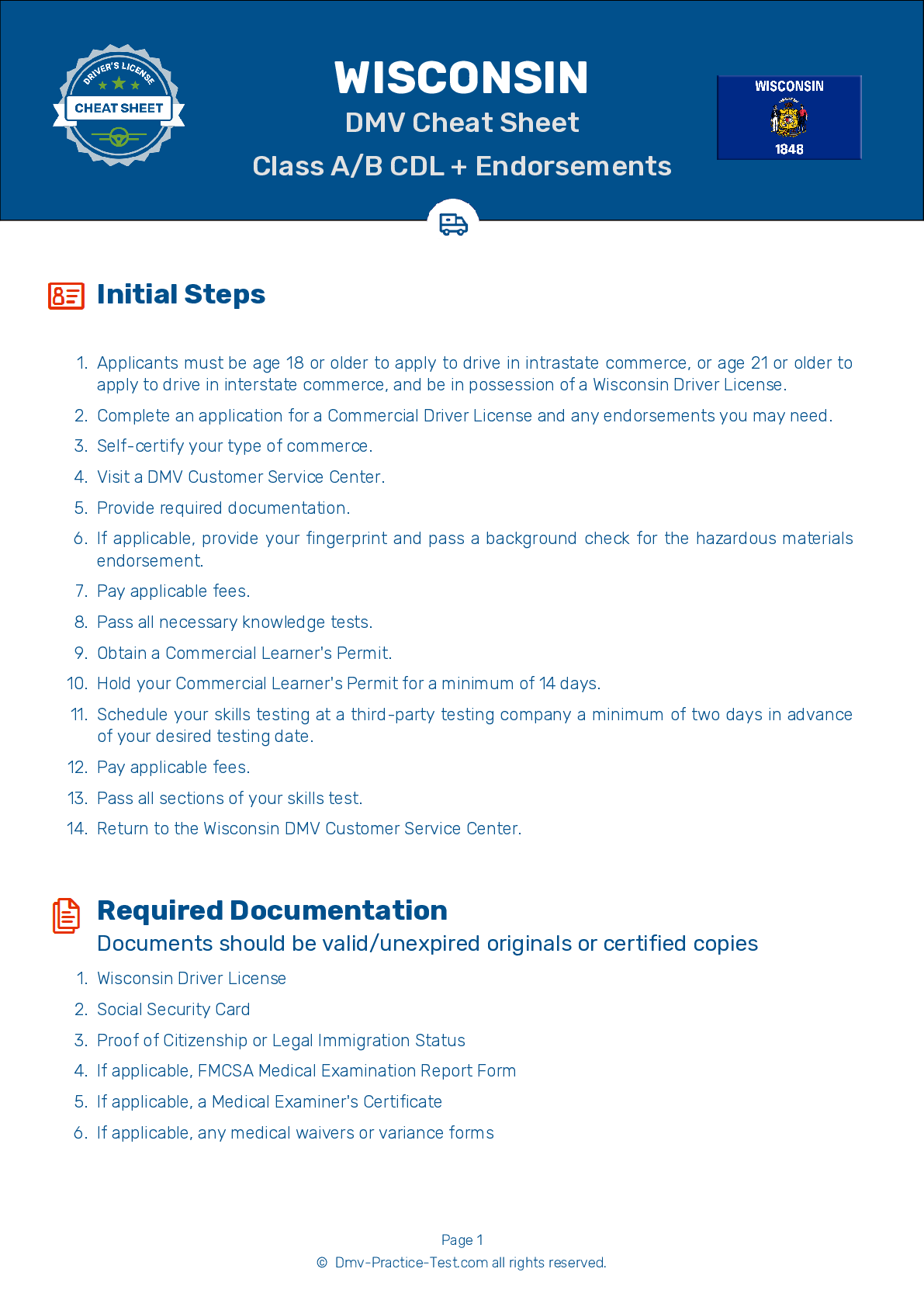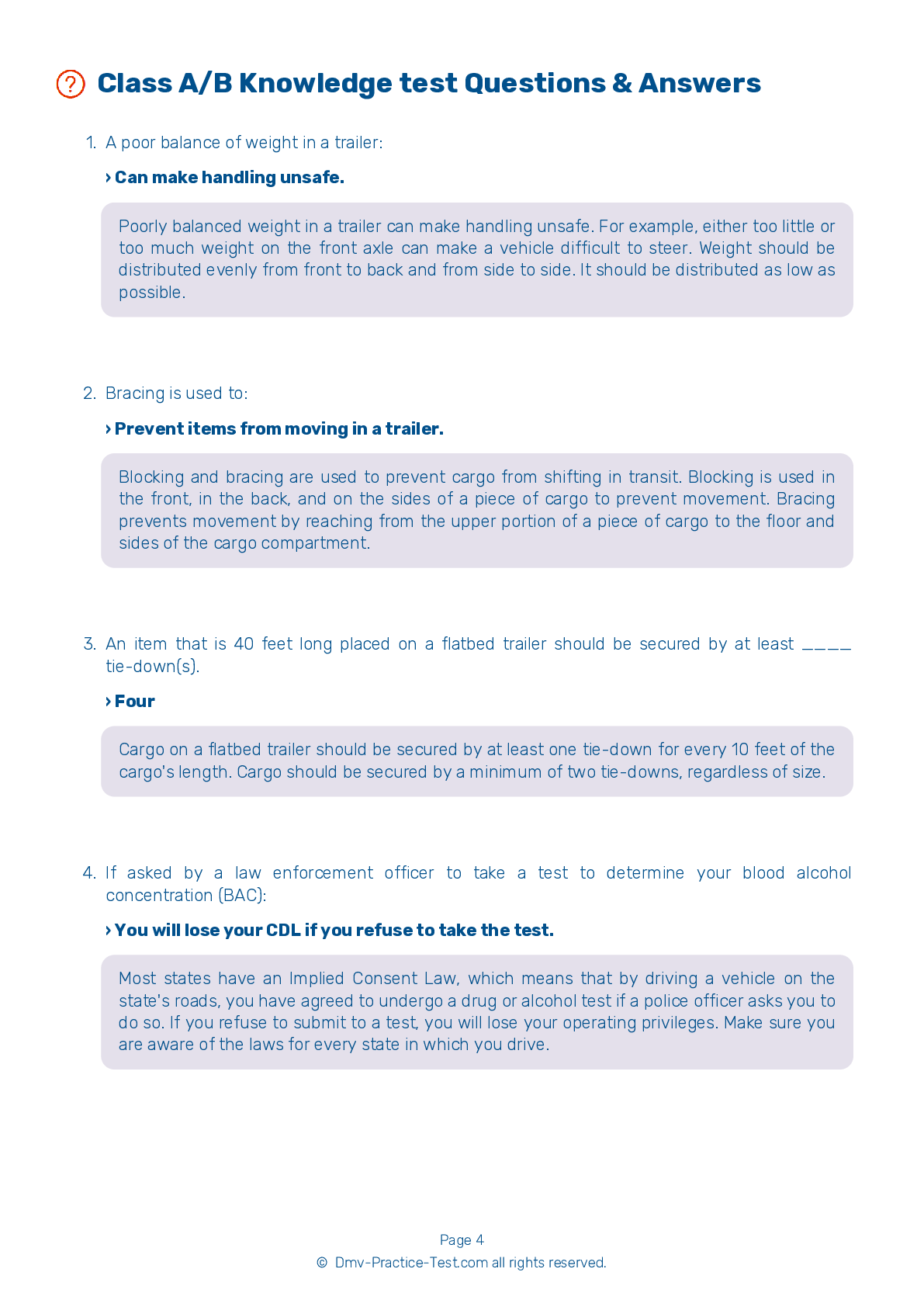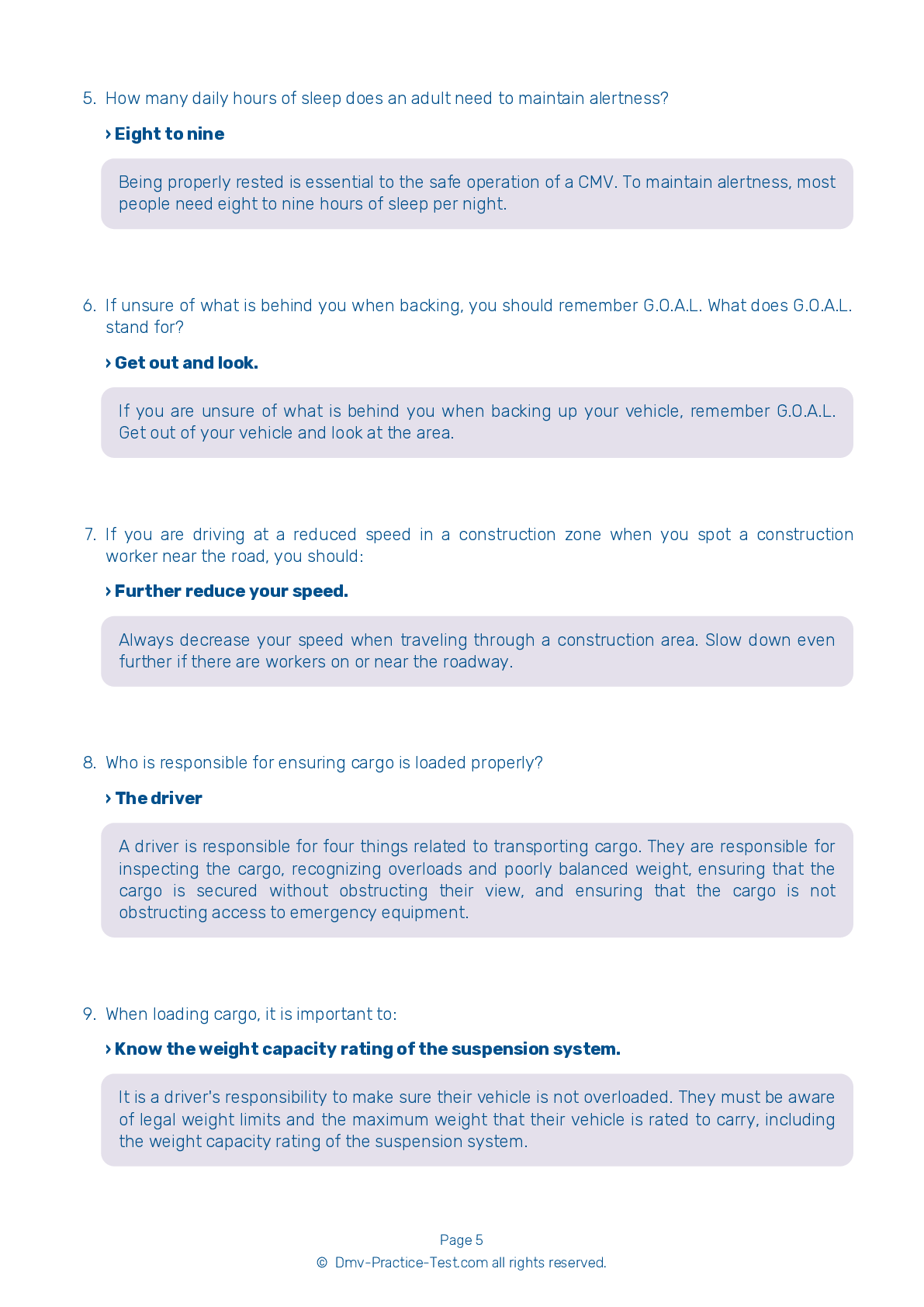HazMat #1
Hazmat Test | Wisconsin 2025 #1 Page 4 of 5
On our website, we provide FREE practice - CDL hazmat test online! The official exam test consists of several obligatory parts, with all of them checking your knowledge of different blocks of road rules. If you need to obtain a WI CDL hazmat endorsement in 2025, practice as much as possible. Free sample tests published on our website will help you check and improve your knowledge and boost your grades. Please bear in mind that Wisconsin requirements for issuing a hazmat endorsement for CDL may vary from those established in other states.
30
24
20
19 . If a product requires a "Poison Inhalation Hazard" placard, the placard must be used when transporting:
The product in a leaking container.
For applicable materials, the "Poison Inhalation Hazard" placard and the appropriate hazard class placard must always be displayed, even for small amounts of the materials.
20 . Shipping papers:
Can be kept as a digital file.
For all shipments of hazardous materials, the shipper must use shipping papers to inform drivers and dockworkers of the risks presented by the cargo.
21 . A driver should ensure that:
The shipping paper is not in the vehicle.
It is a good idea to compare a shipping paper to the applicable package markings and labels. Ensure that the shipper has included the correct basic description on the shipping paper and that it matches markings and labels.
22 . If a driver stops and leaves their vehicle while transporting hazardous materials, the shipping papers should be:
If a driver stops and exits their vehicle, the hazardous materials shipping papers must be left on the driver's seat.
23 . An indicator that cargo contains hazardous materials is:
Packaging can be an indicator of whether or not materials are hazardous. Cylinders and drums are often used to hold and transport hazardous materials.
24 . While driving, shipping papers should be:
While hazardous materials are being transported, shipping papers should either be kept in a pouch in the driver's side door or in another location where the driver is able to easily reach them while their seat belt is fastened. The papers must be clearly visible to anyone who is entering the cab.
2025 Wisconsin | Frequently Asked Questions
To secure a CDL Doubles/Triples endorsement in Wisconsin, you must have a valid Class A CDL. You'll need to pass the Doubles and Triples Endorsement knowledge test, which covers handling, coupling/uncoupling, inspecting doubles/triples, and more. After passing the test, the endorsement will be added to your CDL. Remember, driving experience with similar vehicles is recommended.
To obtain a CDL Doubles/Triples endorsement, you must already have a valid Class A Commercial Driver's License (CDL). You'll then need to pass the Doubles/Triples Endorsement knowledge test. The test covers topics like coupling and uncoupling, inspecting doubles and triples, and handling. Once you pass the test, the endorsement is added to your CDL.
While Wisconsin does not explicitly require specialized experience or training for a CDL Doubles/Triples endorsement, it's highly recommended. The endorsement requires passing a knowledge test that covers handling, inspecting, and coupling/uncoupling doubles and triples. Having practical experience with similar vehicles can significantly help in understanding these areas and successfully passing the test.
Yes, an extra written knowledge test is mandatory to obtain the CDL Doubles/Triples endorsement in Wisconsin. The test covers topics like coupling and uncoupling, inspecting doubles and triples, and handling. There is no additional skills or road test required specifically for this endorsement. Once you pass the written test, the endorsement is added to your CDL.
The CDL Doubles/Triples endorsement primarily requires a knowledge test, not a skills test. The knowledge test focuses on coupling and uncoupling, inspecting doubles and triples, and crucial safety rules. However, practical skills like maneuvering such vehicles safely, understanding the high rollover risk, and managing the longer stopping distances might be needed while operating the vehicle in real-world scenarios.
No, it is not permissible. In Wisconsin, like in all states, you must have a valid CDL Doubles/Triples endorsement to legally operate double or triple trailers. Operating such vehicles without the proper endorsement can lead to serious penalties, including fines and suspension of your commercial driving privileges. Always ensure you have the correct endorsements for the vehicle you're operating.
You can append the CDL Doubles/Triples endorsement to your existing CDL. You don't need to initiate a new license application. However, you must pass the required written knowledge test for the endorsement. Once you successfully pass the test, the Doubles/Triples endorsement will be added to your current CDL.
Yes, drivers holding a CDL Doubles/Triples endorsement in Wisconsin are subject to certain limitations and constraints. They are allowed to operate vehicles with double or triple trailers, but the total length of the combination cannot exceed 68 feet. Additionally, they must adhere to specific weight restrictions and follow all applicable traffic laws and regulations.
In Wisconsin, the maximum length for a double/trailer combination is 75 feet. For weight, the maximum gross vehicle weight is 80,000 pounds. However, the weight of each axle is also regulated, and cannot exceed 20,000 pounds for a single axle or 34,000 pounds for a tandem axle group. These restrictions ensure safe operation of large commercial vehicles on the road.
Yes, drivers with a CDL Doubles/Triples endorsement must follow specific safety regulations. These include not exceeding the maximum weight and length restrictions, ensuring secure coupling and uncoupling of trailers, and following safe driving practices like keeping a safe distance, checking mirrors frequently, and using proper braking techniques. Regular vehicle inspections are also required to ensure safety.



